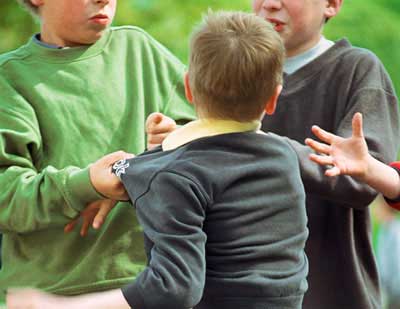Bullying Could Be A Sign of Social Anxiety

Results from two new studies on bullying behavior indicate that the reasons behind bullying may be more complex than researchers once surmised. Playground taunting, name calling, classroom rumors and cruel online banter may be rooted, the study reveals, in a deep need for bullies to be accepted and feel loved.
“The Darker Side of Social Anxiety: When Aggressive Impulsivity Prevails Over Shy Inhibition,” a social study conducted by psychologists Todd Kashdan and Patrick E. McKnight, of George Mason University, looked into the stereotype of shy behavior. It was determined that a subset of individuals that would normally be categorized as submissives or “wallflowers,” may be concealing aggressive tendencies, or “hostile interpersonal patterns” that have the potential for violence.
Kashdan and McKnight report that one in five of the 1,822 shy adults monitored for their study reported elevated aggression and suggest from their findings that, “for people with social anxiety, it may seem like a reasonable strategy to attack and reject other people before those people get a chance to do the same to them.” Thus, the researchers surmise that bullying behavior is rooted in fear of rejection and bullies act out to prevent it.
Though bullying behavior in adults was the focus on the Kashdan and McKnight study, bullying in children has recently come under close scrutiny by the media and Dr. Kashdan reports witnessing very similar bullying behavior in children, as well. Another study, this one focusing on Dutch schoolchildren between the ages of 9 and 12 years old, investigated the reasons behind schoolyard bullying by asking children to fill out questionnaires about which classmates they liked, which they disliked, and which classmates were considered bullies, or which classmates were targets of bullies.
The researchers behind this study from the University of Groningen analyzed the data provided by the bully questionnaires and decided from their results that schoolyard bullies have a tendency to categorize their classmates into one of two categories: potential sources of affection or targets for domination. Targets for domination were most often found to be children that had been previously rejected or bullied by other classmates. Interestingly, the children most often identified classmates as potential sources of affection shared the same gender. Apparently, bullies seek the approval of children of the same sex, so it seems that bullies really do have a deep need for acceptance from their peers. Explains the study’s lead author, Rene Veenstra, “Bullies are very strategic in their behavior. They’re looking for attention and affection from their own peer group.”
Apparently, bullies of all ages are less the social misfits that society has held them to be, and more strategic manipulators of the emotions and weaknesses of others. Bullies, it seem, strive to protect their own insecurities by intimidating those they dislike and work diligently to win the approval of those they respect. A tendency for bullies to be overweight might be explained by this phenomenon. Also, the study revealed that the opinion of bullying behavior by the opposite sex is favorable, and girls reported positive feelings toward boys who bullied. Overall, these studies reveal a complexity and elements of vulnerability and emotionality that were previously not associated with bullying behavior.